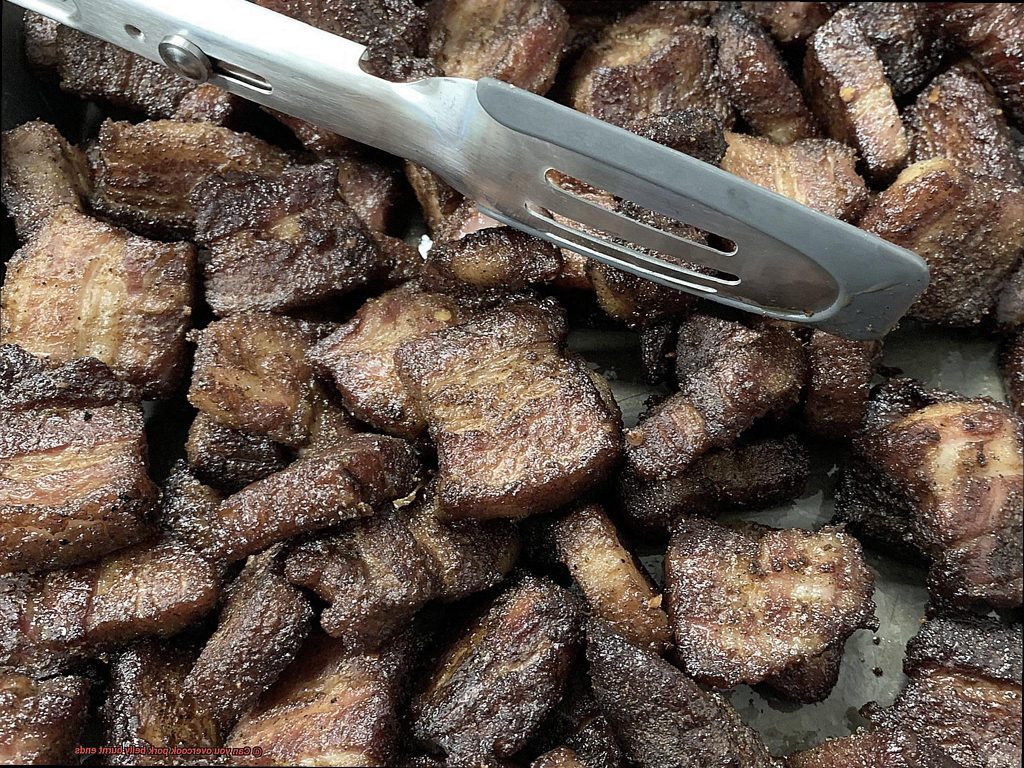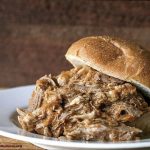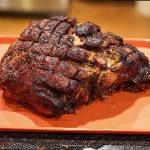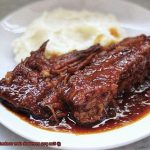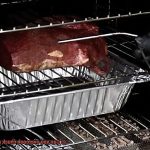Today, we embark on an epic expedition into the tantalizing realm of pork belly burnt ends. Prepare your taste buds for a symphony of succulent, caramelized pork that dances on your palate with a smoky serenade. This culinary masterpiece, born from the genius minds of barbecue virtuosos, showcases the magical metamorphosis of unassuming pork belly into bite-sized nuggets of pure indulgence.
But brace yourselves, because we’re about to tackle a burning question: can you push these delectable delights beyond their limits? While it might seem blasphemous to even consider compromising such a mouthwatering creation, understanding the perils of overcooking is vital to achieving porky perfection. So buckle up as we delve into the captivating world of pork belly burnt ends and unlock the secrets to preserving their unrivaled succulence, texture, and flavor explosion. Fear not, my friends – we’ve got your back.
Contents
What are Pork Belly Burnt Ends?
These delectable bite-sized pieces of pork belly are slow-cooked, glazed, and grilled to perfection, creating a heavenly combination of smoky, sweet, and savory flavors. In this ultimate guide, we’ll walk you through everything you need to know to achieve the perfect pork belly burnt ends.
Preparing the Pork Belly:
To make pork belly burnt ends, start with a slab of pork belly. This cut, known for its rich fat content and succulent meat, is the secret behind the melt-in-your-mouth texture of burnt ends.
Season the pork belly with a dry rub made from a combination of brown sugar, paprika, garlic powder, and black pepper. This rub not only enhances the flavor but also forms a delicious crust when cooked.
Low and Slow Cooking:
The key to achieving tender and flavorful pork belly burnt ends lies in the low and slow cooking process. Smoke the seasoned pork belly at a low temperature for several hours, allowing the fat to render slowly and infusing the meat with smoky goodness. Use wood chips or pellets in your smoker to impart that authentic barbecue flavor.
Cubing and Glazing:
Once the initial smoking is done, it’s time to cube the pork belly into bite-sized pieces. Place these chunks in a pan or foil tray and add another layer of seasoning along with a glaze made from your favorite barbecue sauce, honey, and other ingredients of choice. This glaze adds a sticky sweetness to the dish while caramelizing on the surface during grilling.
Grilling for Caramelization:
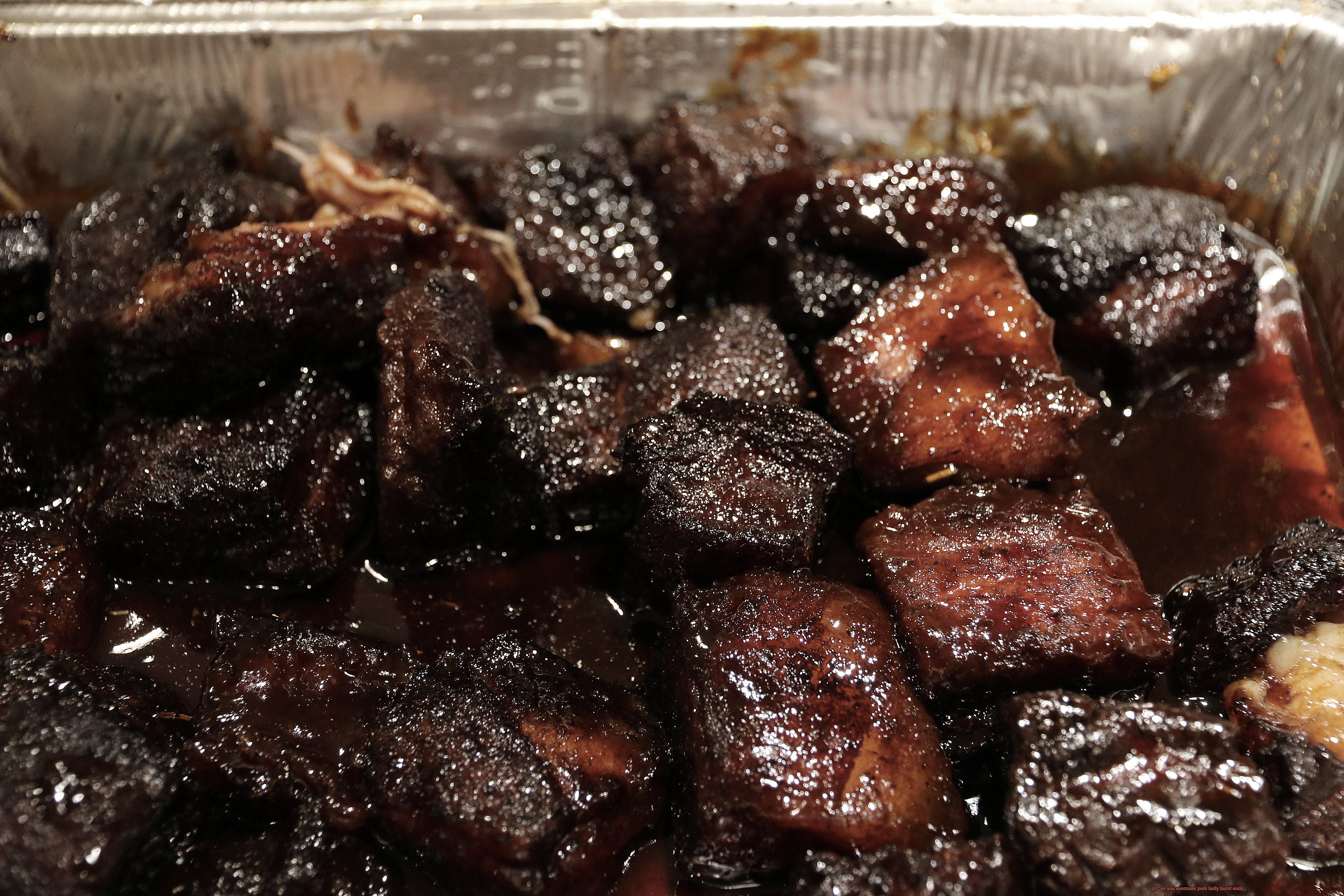
Return the pan or foil tray to the smoker or oven for another round of cooking. This stage helps further tenderize the meat and allows the glaze to caramelize, creating a sticky and flavorful coating on the pork belly burnt ends. Keep a close eye on the grill to avoid overcooking or burning.
Serving and Pairing:
Once the pork belly burnt ends are done, it’s time to savor the fruits of your labor. Serve them as an appetizer or side dish at your next barbecue gathering. Pair them with classic favorites like cornbread, coleslaw, or baked beans for a complete and satisfying meal. The versatility of pork belly burnt ends allows you to experiment with different seasonings, glazes, and side dishes to suit your taste.
Key Considerations for Cooking Pork Belly Burnt Ends
Embark on a culinary journey and experience the tantalizing combination of smoky, sweet, and savory flavors with the perfect pork belly burnt ends. These bite-sized pieces of slow-cooked, glazed, and grilled pork belly will transport your taste buds to cloud nine. In this comprehensive guide, we will explore the key considerations for cooking pork belly burnt ends, ensuring a culinary masterpiece that will impress your guests at your next barbecue gathering.
Choose the Right Cooking Method:
Traditionally, pork belly burnt ends are slow-cooked on a smoker or grill using indirect heat. This method allows the fat to render slowly, resulting in tender and juicy burnt ends. Make sure you have a smoker or grill with excellent temperature control for optimal results.
Control the Temperature:
Maintaining the perfect temperature is crucial when cooking pork belly burnt ends. Aim for a low temperature of around 250-275°F (121-135°C) to achieve the desired tenderness. This low and slow cooking method allows the fat to melt slowly, infusing the meat with flavor and ensuring a tender texture.
Seasoning and Marinade:
Enhance the natural flavor of the pork belly by choosing a balanced seasoning or marinade. Whether you prefer simplicity with salt and pepper or opt for rubs or marinades, remember not to overpower the meat’s natural taste with excessive seasoning.
Cut Uniform Cubes:
To ensure even cooking, cut the pork belly into uniform cubes of approximately 1-2 inches (2.5-5 cm) in width. This prevents some pieces from becoming overcooked while others remain undercooked, resulting in perfectly cooked burnt ends.
Monitor the Cooking Time:
As the pork belly cooks, it goes through different stages of tenderness. Use a probe thermometer to check for an internal temperature of around 195°F (90°C) to determine if they are done. This temperature indicates that the collagen has broken down, resulting in tender and melt-in-your-mouth burnt ends.
Adjust Cooking Time:
The cooking time may vary depending on the size and thickness of the pork belly cubes. Start checking for doneness after about 3-4 hours of cooking and adjust the time accordingly. Remember, patience is key.
Rest Before Serving:
After removing the pork belly burnt ends from the heat, let them rest for about 10-15 minutes. This crucial step allows the juices to redistribute, resulting in even more tender and flavorful burnt ends.
Ideal Cooking Time for Pork Belly Burnt Ends
Look no further than pork belly burnt ends, the ultimate crowd-pleaser. But how long should you cook these delectable bites of smoky goodness to achieve perfection? Let’s dive into the ideal cooking time for pork belly burnt ends.
To achieve tender, melt-in-your-mouth meat, we must embrace the low and slow cooking method. This means cooking the pork belly at a low temperature for an extended period. Picture this: a gentle heat of 225-250 degrees Fahrenheit caressing the succulent pork belly for about 2-3 hours. This allows the fat to render slowly, resulting in a tender texture that will make your taste buds dance.
However, it’s important to remember that cooking times can vary based on factors such as the size and thickness of the pork belly pieces. So instead of relying solely on a set cooking time, invest in a reliable meat thermometer and aim for an internal temperature of around 195 degrees Fahrenheit. This is the sweet spot where collagen breaks down, transforming the meat into a heavenly delight.
But wait, there’s more. If you desire fall-apart tenderness, extend the cooking time to 4-5 hours or until the internal temperature reaches around 205 degrees Fahrenheit. On the other hand, if you prefer a slightly firmer texture with a delightful chew, reduce the cooking time slightly. Just be cautious not to overcook them, as dry and tough burnt ends are not what we’re aiming for.
Once your pork belly burnt ends have reached their ideal internal temperature, grant them the respect they deserve by allowing them to rest. This crucial step redistributes the precious juices throughout the meat, resulting in maximum flavor and moistness that will have your guests begging for seconds.
The Dangers of Overcooking Pork Belly Burnt Ends
Imagine succulent, tender morsels of pork belly, perfectly caramelized on the outside, with a melt-in-your-mouth texture that leaves you yearning for more. But beware. Before you ignite the grill, let’s explore the lurking dangers of overcooking. Brace yourself for these juicy revelations.
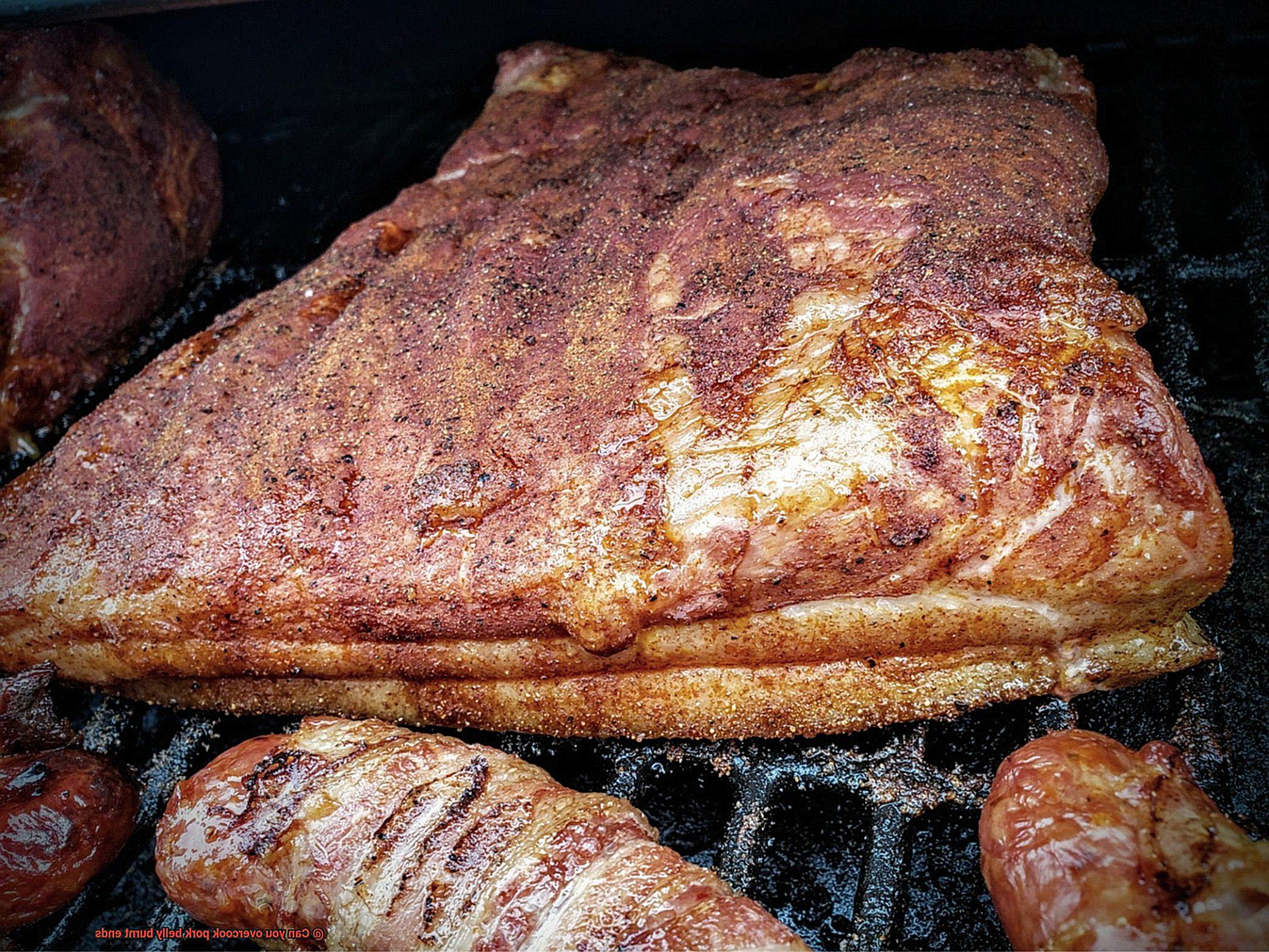
Texture Trouble:
Prepare for a culinary catastrophe if you dare to overcook your pork belly burnt ends. Imagine sinking your teeth into a dry, tough piece of meat reminiscent of chewing on a rubber band. This nightmare scenario occurs when cooking for too long, causing the flavorful fat that gives succulence and moisture to evaporate.
Flavor Fadeout:
In the realm of grilling, flavor reigns supreme, but overcooking is its sworn enemy. Prolonged cooking time causes those delectable flavors we crave to vanish into thin air, leaving behind a bland and lackluster result. Don’t disappoint your taste buds with an underwhelming experience.
The Bitter Burn:
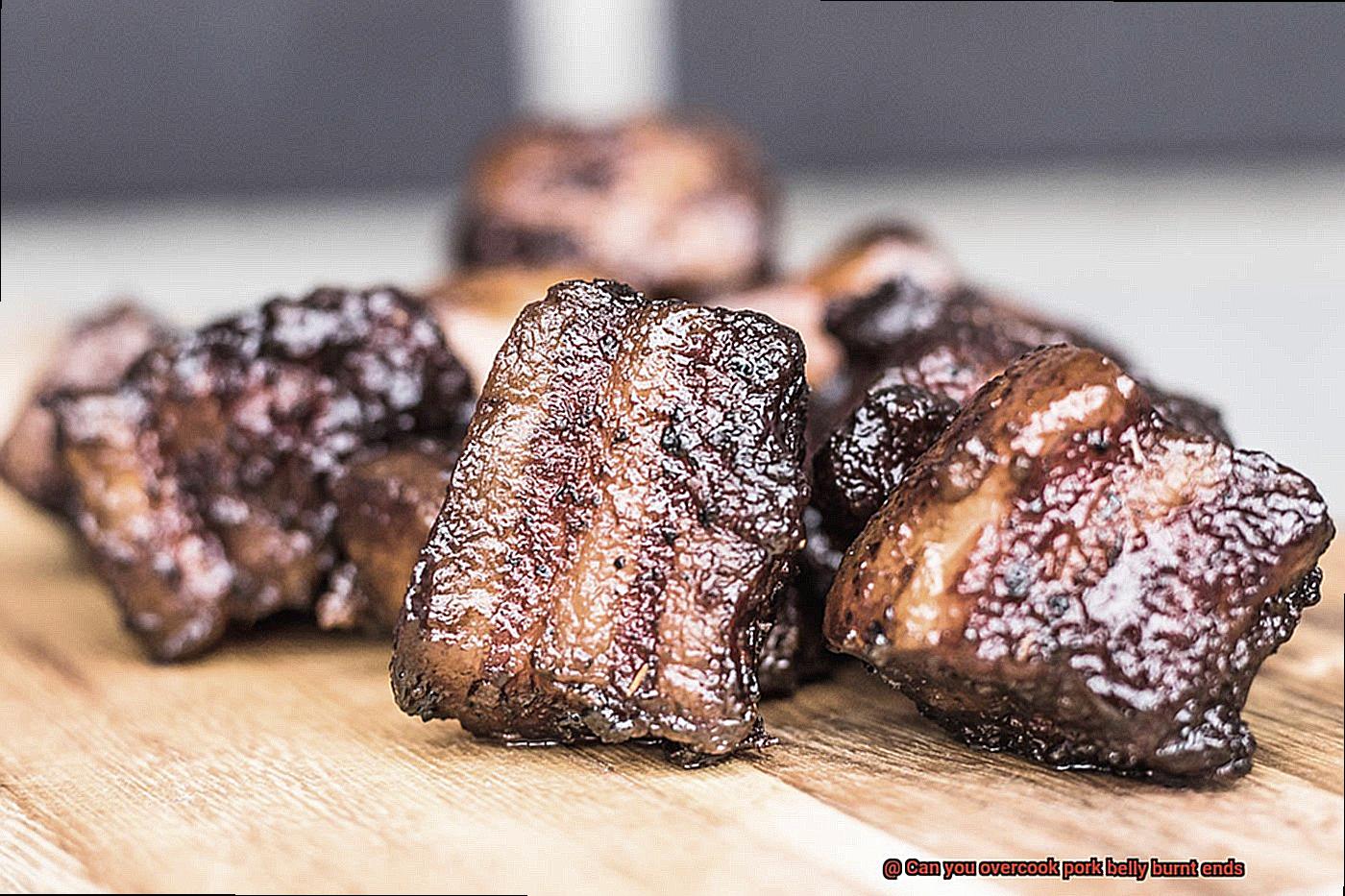
A touch of char adds delight, but excessive heat can transform your dreamy burnt ends into a bitter nightmare. Overcooking can lead to an overly blackened exterior that leaves an unpleasantly bitter taste in your mouth. Let’s maintain balance and avoid this culinary tragedy.
Unappetizing Appearance:
We feast with our eyes first, and unfortunately, overcooked pork belly burnt ends won’t win any beauty contests. Instead of the enticing caramelized exterior we desire, overcooking can result in a pale and unappealing appearance that dampens our appetite. Let’s strive for picture-perfect results.
The Moisture Meltdown:
Moisture is the key to succulent and juicy meat, and overcooking can rob you of this pleasure. As the meat cooks for too long, precious moisture evaporates, leaving you with a dry and uninspiring dish. Keep those juices locked in for maximum deliciousness.
Health Hazards:
Lastly, we must consider the potential health risks associated with mishandled or overcooked meat. Improperly cooked or overcooked pork belly burnt ends can harbor harmful bacteria or pathogens, leading to unpleasant consequences. Let’s prioritize food safety alongside our culinary adventures.
Signs of Overcooked Pork Belly Burnt Ends
Imagine the anticipation as you marinate and smoke a beautiful pork belly, eagerly awaiting the mouthwatering taste of perfectly cooked burnt ends. But as you take your first bite, disappointment washes over you. The texture is dry and tough, the flavors are bitter, and the appearance is far from appetizing. What went wrong? In this guide, we will explore the signs of overcooked pork belly burnt ends, ensuring that you never have to suffer through a grilling disaster again.
Texture: A Mouthful of Dryness
When it comes to pork belly burnt ends, texture is key. Overcooked burnt ends will leave you with a dry and tough mouthful. The fat should render down and become tender, but if the meat is overcooked, it can become dry and chewy. Aim for that perfect balance between melt-in-your-mouth tenderness and a slight chew.
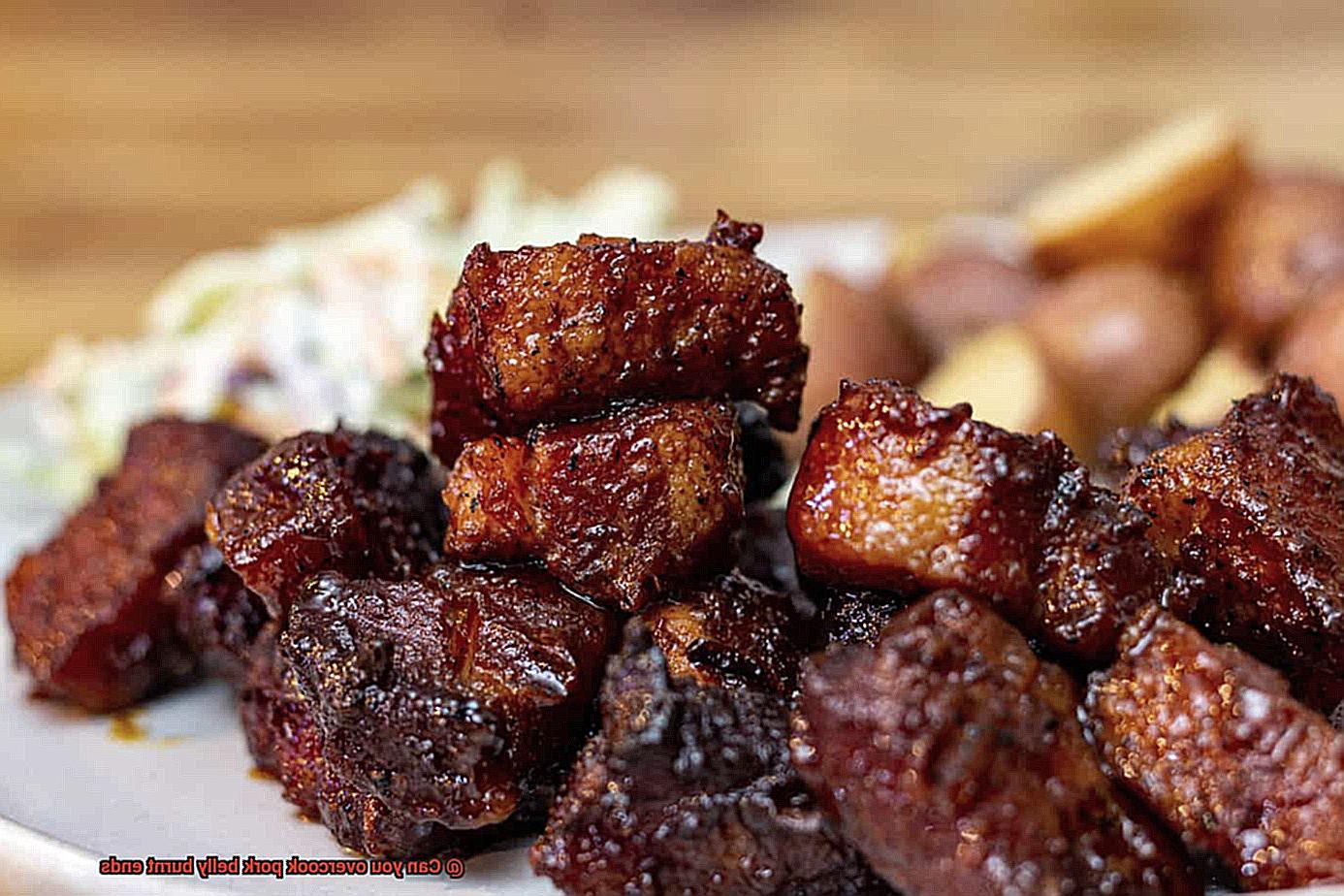
Color: The Beauty of Caramelization
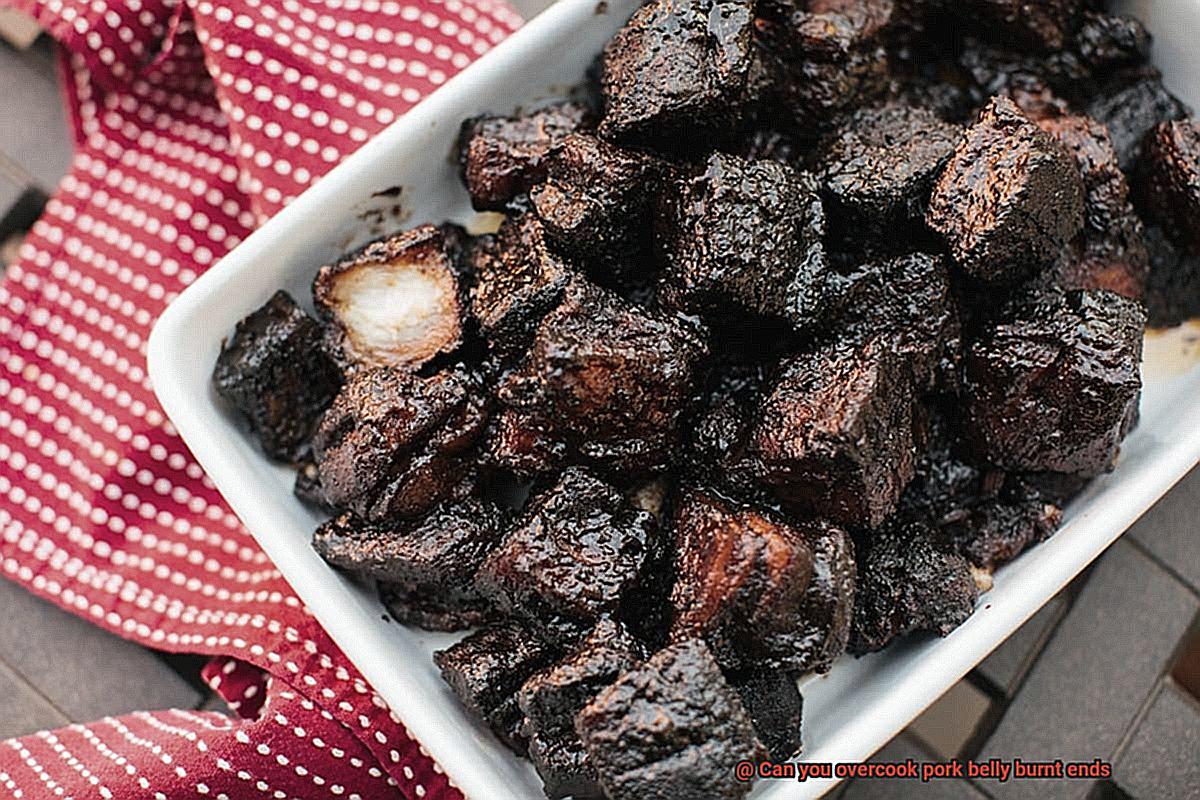
One of the hallmarks of well-cooked pork belly burnt ends is their rich caramelized exterior with a pinkish interior. However, overcooking can lead to an excessively dark or even burnt exterior, while the interior loses its pink hue and becomes pale. Aim for that beautiful golden-brown color with a hint of smoky pinkness in the center.
Taste: Bitterness That Lingers
Overcooking can result in a bitter or charred taste that no amount of sauce can mask. The sugars in your rub or sauce can caramelize too much and turn bitter when exposed to high heat for too long. Keep an eye on your burnt ends to prevent this unwanted flavor profile.
Lack of Juiciness: A Disappointing Dryness
Nothing is more disappointing than biting into a dry piece of meat. Perfectly cooked pork belly burnt ends should be juicy and succulent. However, overcooking can cause them to lose their natural juices, resulting in a less flavorful end product. Aim for that mouthwatering juiciness that will leave you reaching for seconds.
Shrinkage: A Lesson in Evaporation
Overcooking can lead to excessive shrinkage of the pork belly burnt ends. As the moisture evaporates from the meat, the pieces can shrink significantly in size. Keep an eye on the size of your burnt ends to ensure they maintain their succulence and visual appeal.
Difficulty in Cutting: Tough to Tackle
If your pork belly burnt ends are overcooked, they can become difficult to slice through. Instead of being tender and easy to cut, they may require more force and end up breaking apart or crumbling. Avoid this by keeping a close eye on your grilling time and temperature.
How to Avoid Overcooking Pork Belly Burnt Ends
If you’re a grill master looking to take your barbecue skills to the next level, pork belly burnt ends are a must-try. These flavorful and tender bites of meat can be a showstopper at any cookout. However, the risk of overcooking them and ending up with dry, tough chunks of meat is ever-present. Fear not. With some expert tips and techniques, you can avoid this culinary catastrophe and create melt-in-your-mouth pork belly burnt ends that will leave everyone craving more.
Choose the Right Cut for Juiciness:
To ensure juicy burnt ends, start with the right cut of pork belly. Look for even thickness and generous fat marbling throughout the meat. The fat will render during cooking, keeping the burnt ends moist and succulent. Avoid lean cuts that are prone to drying out.
Master Temperature Control:
Maintaining the perfect cooking temperature is crucial. Keep your grill set at a low and steady temperature of around 225-250°F (107-121°C). This slow cooking allows the fat to render and the collagen to break down, resulting in tender and juicy burnt ends. Use a reliable thermometer to monitor the grill’s temperature throughout the cooking process.
Trust Your Meat Thermometer:
Invest in a high-quality meat thermometer – your BBQ’s best friend. Insert it into the thickest part of the meat, avoiding bones or fat. When the internal temperature reaches 195-205°F (90-96°C), it’s time to remove the pork belly from the grill. This ensures perfectly cooked, tender, and juicy results.
Embrace the Texas Crutch Technique:
To prevent excessive drying out, employ the Texas crutch technique. Once your pork belly reaches an internal temperature of around 160-165°F (71-74°C), tightly wrap it in aluminum foil or butcher paper. This helps retain moisture while speeding up the cooking process, resulting in moist and succulent burnt ends.
Let It Rest and Reap the Rewards:
Patience is key – don’t rush to slice into your mouthwatering creation. Allow the cooked pork belly to rest for 10-15 minutes. This resting period allows the juices to redistribute, resulting in a more flavorful and tender final product. Cover the pork belly loosely with foil and let it rest before slicing into delectable burnt ends.
Tips and Tricks for Perfectly Cooked Pork Belly Burnt Ends
These delectable cubes of melt-in-your-mouth goodness are a barbecue favorite, and with a little know-how, you can easily achieve tender, juicy, and flavorful results every time. Get ready to impress your friends and family with these tips and tricks that will elevate your pork belly burnt ends to barbecue greatness.
Choose the Best Cut:
To achieve perfectly cooked pork belly burnt ends, start by selecting a pork belly with even marbling and a good ratio of fat to meat. This ensures that your burnt ends will be juicy and bursting with flavor. Don’t be afraid of some fat; it will render down during cooking and add incredible moisture and richness to the final dish.
Trim and Season:
Before cooking, trim any excess skin or fat from the pork belly, then generously season it with a dry rub or marinade of your choice. Let the flavors infuse by refrigerating for a few hours or overnight. Consider using a combination of salt, pepper, garlic powder, paprika, and brown sugar for a well-rounded flavor profile.
Low and Slow Cooking Method:
For that mouthwatering tenderness, opt for a low and slow cooking method. Use a smoker or an oven set to around 225°F to cook the pork belly slowly over indirect heat. This allows the fat to render and the collagen to break down gradually, resulting in succulent, fall-apart meat.
Wrap for Moisture Retention:
To retain moisture and speed up cooking, wrap the pork belly in aluminum foil or butcher paper after a couple of hours of cooking. This technique, known as the Texas crutch, helps create succulent burnt ends while still allowing smoke flavor to penetrate. The steam created inside the foil or paper helps to break down connective tissues and keep the meat moist.
Glaze or Sauce for Flavor:
When the internal temperature reaches around 190°F, it’s time to glaze or sauce your burnt ends. Brush on your favorite barbecue sauce or glaze and return them to the smoker or oven for an additional 15-20 minutes to set the glaze. This step adds a final layer of flavor and creates a sticky, caramelized crust that will have everyone coming back for more.
DoFJWDvyqPU” >
Conclusion
In conclusion, it is indeed possible to overcook pork belly burnt ends.
These succulent pieces of meat can go from tender and juicy to dry and tough if left on the grill or smoker for too long. The key to achieving perfect pork belly burnt ends lies in finding that delicate balance between caramelization and moisture retention.
So, keep a close eye on your pork belly burnt ends and make sure to remove them from the heat at just the right moment.

